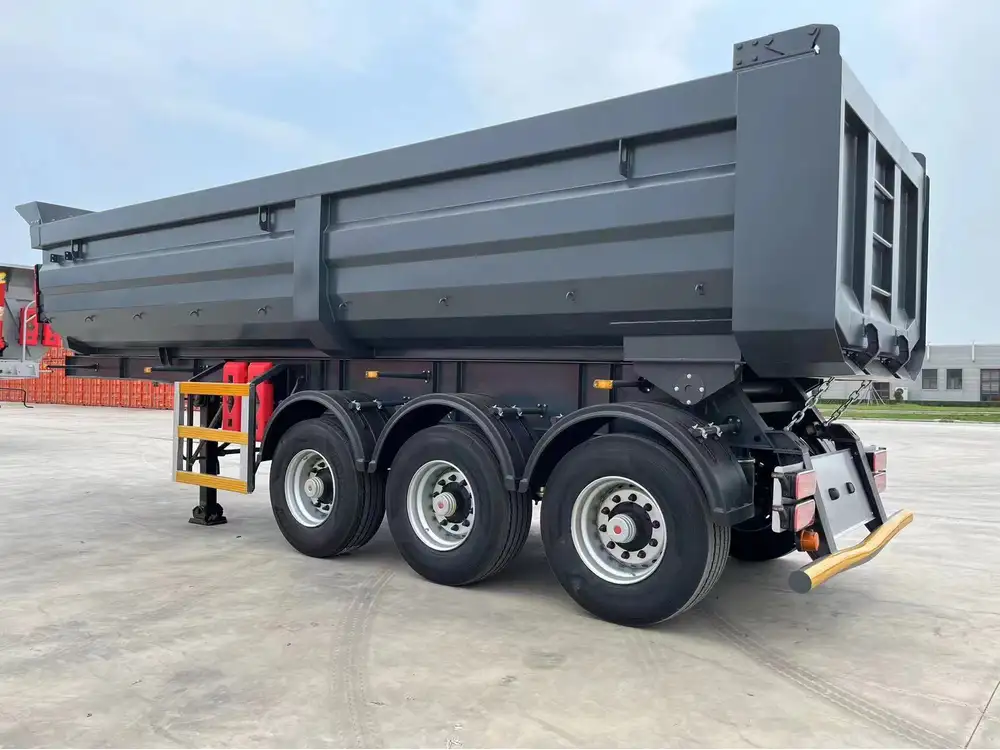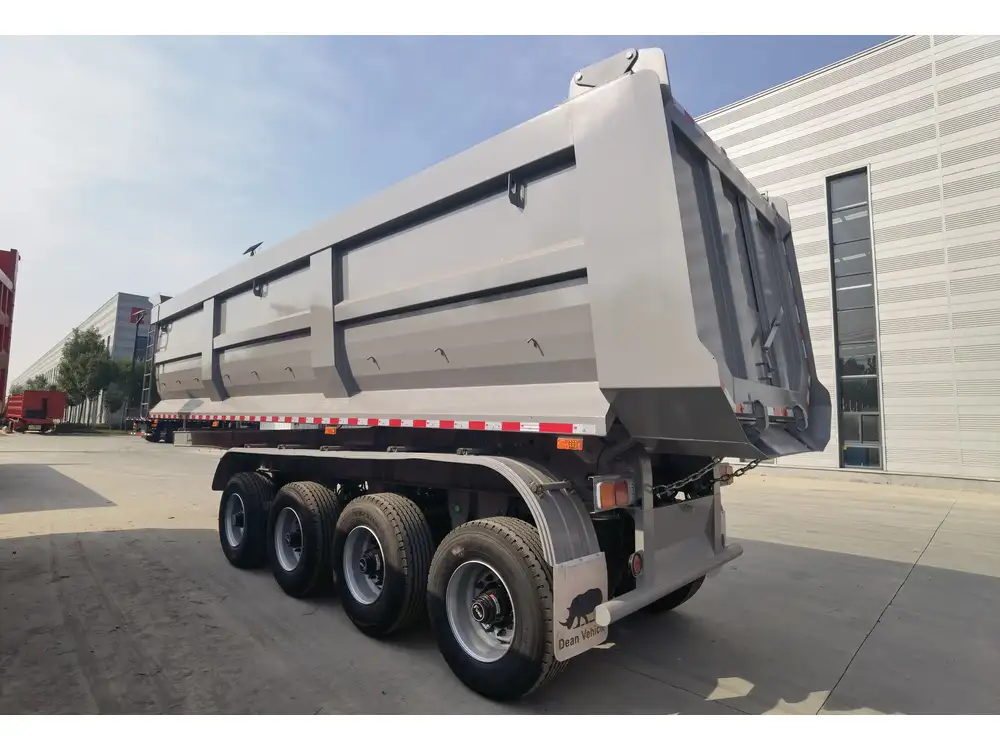Understanding the capacity of a semi-trailer, particularly in terms of pallet storage, is essential for logistics, shipping, and inventory management. This article digs into the intricate dimensions and configurations of semi-trailers and unravels how many standard pallets they can typically accommodate. By examining various factors like trailer type, pallet dimensions, and loading configurations, we aim to provide a detailed overview that will assist manufacturers, shippers, and logistics professionals alike.
Overview of Semi-Trailer Dimensions
Semi-Trailer Types and Their Capacities
Not all semi-trailers are created equal. The type of semi-trailer determines not only its structural applications but also its cargo capacity. Here are some common types of semi-trailers:
| Trailer Type | Length | Width | Height | Typical Pallet Capacity |
|---|---|---|---|---|
| Standard Dry Van | 53 feet | 8.5 feet | 13.5 feet | 26 to 30 pallets (standard) |
| Refrigerated Trailer | 53 feet | 8.5 feet | 13.5 feet | 24 to 28 pallets |
| Flatbed Trailer | 48 to 53 feet | 8.5 feet | Varies | 24 to 30 pallets |
| Step Deck Trailer | 48 to 53 feet | 8.5 feet | Varies | 20 to 24 pallets |
| Lowboy Trailer | 48 to 53 feet | 8.5 feet | Varies | Depends on the load type |
The standard semi-trailer length ranges from 48 to 53 feet, with most regulations allowing a maximum width of 8.5 feet and a height of 13.5 feet. The overall cargo volume can significantly influence the number of pallets that a trailer can carry.

Standard Pallet Specifications
Understanding what constitutes a “pallet” is vital when calculating capacity. The most commonly used standard pallet size in North America is:
- Width: 48 inches (4 feet)
- Length: 40 inches (3.33 feet)
- Height: 6 inches (0.5 feet)
Given the above dimensions, a standard pallet occupies an area of approximately 13.33 square feet.
Calculating Pallet Capacity
To effectively understand how many pallets a semi-trailer can hold, consider using a systematic approach based on the available floor space:
Calculate Available Cargo Area: For a typical 53-foot semi-trailer:
- Length: 53 feet (636 inches)
- Width: 8.5 feet (102 inches)
- Total area = Length × Width = 636 inches × 102 inches = 64,632 square inches (approximately 448 square feet)
Determine Pallet Area: Using the standard pallet dimensions:
- Area = 48 inches × 40 inches = 1,920 square inches (approximately 13.33 square feet)
Calculate the Number of Pallets: Total Number of Pallets = Total Area of Trailer / Area of One Pallet
- Total Number of Pallets = 64,632 square inches / 1,920 square inches ≈ 33.7
However, practical considerations typically limit the actual number of pallets loaded to 26 to 30 pallets in a standard dry van configuration, accounting for space for forklift operation and load stabilization.
Load Configuration Techniques

1. Layered Loading
In scenarios where height and weight allowances permit, pallets can be stacked in layers to maximize space. However, stacking introduces complexity in weight distribution and can compromise safety, making it crucial to evaluate the semi-trailer’s load rating.
2. Cross-Stacking
Employing a cross-stacking technique helpfully increases stability while maximizing the number of pallets that can fit. This method alternates the direction in which pallets are placed to distribute weight evenly.
3. Using Load Bars
Load bars or straps can help secure the pallets in place during transit, which is particularly important in preventing shifting that could impact load capacity and safety.

Trailer Payload Considerations
While understanding capacity in terms of pallets is critical, it’s equally important to take into account other factors that can affect payload.
Weight Limitations: A standard semi-trailer has a gross vehicle weight rating (GVWR) ranging from 80,000 to 85,000 pounds. Each pallet typically weighs between 1,000 and 2,000 pounds, meaning that weight must be managed correctly to ensure compliance with regulations.
Volume vs. Weight Restrictions: Most shipping companies face constraints due to either the volume or weight of their loads. In some cases, the trailer can fit more pallets volumetrically, but the weight of those pallets can exceed legal limits.
Practical Examples of Semi-Trailer Loads
To illustrate the practicality of understanding pallet capacity within semi-trailers, we provide real-world scenarios that demonstrate how businesses leverage this knowledge.
Case Study 1: Food Distribution
In the realm of food distribution, a company might utilize a refrigerated trailer to carry perishable goods. Given a temperature-controlled semi-trailer with a standard configuration, the company effectively calculates:
- Total pallets = 28
- Goods weight estimation = 48,000 pounds
This aligns well within the restrictions for a safe and secure truckload, while optimizing delivery operations to ensure all products remain fresh.

Case Study 2: Retail Supply Chain
A retail store receives shipments of bulk goods weekly. Utilizing a flatbed semi-trailer:
- Total pallets = 24
- Average load = Clothing and packaged goods weighing approximately 48,000 pounds
By accurately calculating trailer space needs and pallet arrangement, the retail chain maximizes delivery efficiency while minimizing transportation costs.
Related Considerations for Shipping and Logistics
Regulations and Best Practices
Understanding the regulations governing transportation is paramount. The Department of Transportation (DOT) and the Federal Motor Carrier Safety Administration (FMCSA) enforce stringent rules regarding weight limits and trailer configurations. Here are a few points to consider:
- Weight Distribution: Ensure that the load is balanced across the trailer for safe transport.
- Documentation: Always have proper shipping documentation, citing weight, number of pallets, and cargo content.
- Training for Drivers and Handlers: Ensure that logistics staff properly understand pallet loading techniques and the importance of securing loads.

Innovative Technologies Exploring Pallet Management
In an ever-evolving logistics landscape, several technologies are proliferating that improve pallet management:
- RFID Tagging: Real-time tracking of pallets for efficient inventory management.
- Data Analytics: Assessing historical data to optimize load planning and reduce costs.
Conclusion: Mastering Your Pallet Capacity
The inquiry into “how many pallets does a semi-trailer hold” is not just a mathematical one; it encapsulates considerations surrounding logistics, safety, and efficiency. Here we discussed the fundamental dimensions, a variety of configurations, and practical determinations vital for anyone involved in shipping and freight management.
With precise calculations, consideration of constraints, and an understanding of related practices, manufacturers and logistics companies alike can make informed decisions that maximize semi-trailer capacity effectively. By integrating these methods into your operations, you not only improve efficiency but also realize significant cost savings, thereby facilitating a seamless flow in the world of logistics.



